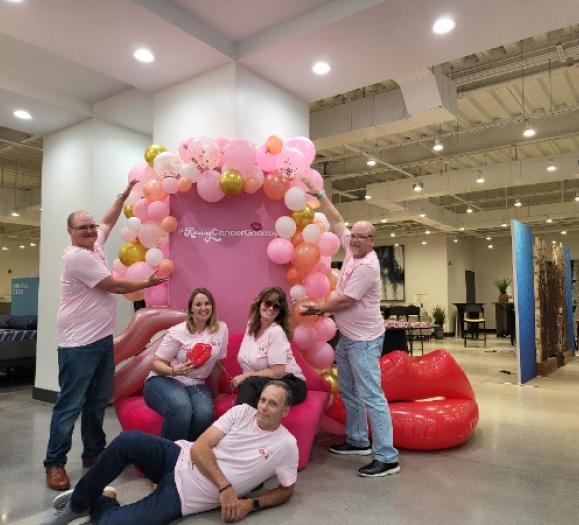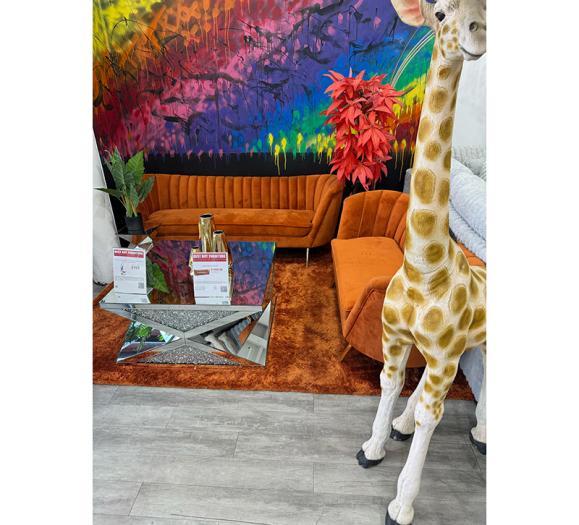This week, Retail Dive asked, "Is home goods the next industry ripe for disruption?"
The answer? Yes, almost definitely. Just a few notes on some happenings in the past year:
- Global Views launched a direct-to-consumer line. A new direct-to-consumer rug company launched last year, and other direct-to-consumer furniture lines continue to expand.
- Multiple digital interior design firms have popped up, and some designers are offering digital design through their firms.
- Amazon has launched not one, not two, but three furniture collections.
- Wayfair announced a store opening and help pop-ups over the holidays.
In short, the home good industry will likely face a disruption in the near future. Here's what retailers can do to best position their businesses.
Don't wait for online furniture buying to become ubiquitous
The data right now looks good for home furnishings retailers. In recent reports, 80 percent of consumers say they want to buy furniture in store. That's not the case for lighting quite so much anymore, but most furniture purchases seem to be happening in stores.
For now.
Look, 10 years ago, people felt comfortable buying books and maybe music online, and that was about it. Now? They're ordering mattresses online. Startups like Campaign Living, Burrow and Article are making it easier to buy big furniture online and return it if purchasers don't like it. In the last two years, Amazon has released three furniture collections, all of which have a 30-day return policy.
At some point, technology will reach a level where more customers feel comfortable buying online. Their decision may also be affected by their tastes and habits and maybe even politics. It's not a matter of if this will happen, but when.
So don't wait until it's happened to make improvements to your store, your website or your marketing strategy.
Why you need to do this: If you wait, your competitors will be miles ahead of you, and your chances of catching up will be lower.
Buff up your product pages
We know customers start looking for products online, and the information on product pages can either compel them to buy — or at least visit a showroom — or turn them off completely. It's not enough to have either a nice photo or a great product description. Your pages need everything — product specs, measurements, multiple photos, finishes and upholstery options.
With this information, you can close half the sale before a customer even enters your showroom. The customer will already know that the sofa will fit and the finish will match. All that's left to do is see it in person — just to make sure — and then place the order.
Why do you need this: These days, furniture shopping begins online, and it's safe to say that almost all customers will likely land on a big-box retailer's site at some point. Both Target and Restoration Hardware's product pages have all the details needed to help customers decide if the sofa is worth looking at in person — sizes, configurations, materials details, etc. Those companies set the standards, so if your product pages don't offer much, customers will likely be disappointed and maybe won't bother stopping by your store.
Add lots of photos to product pages
One silo shot isn't going to cut it anymore. Photography can help make or break a sale, so the better the photography of a product, the more likely customers will want to either buy it online or see it in-store.
Most manufacturers will provide product photography, but if it isn't great or they don't provide enough of it, you can take your own photos. Even just a few quality photos of the product in your showroom can go a long way. Make sure you include close-ups and detail shots so customers can really see the product up close.
Why you need to do this: Companies like IKEA have already adopted augmented and virtual reality, but experts don't know if it's really influencing sales just yet. Most home furnishings and lighting retailers don't need this technology just yet. A few good photos of the product, combined with plenty of details, can work just as well.
Use chatbots on your site
You probably get the same 10 questions over and over — what's your return policy, what time do you open on Monday, what time do you close? Even though all that information may be readily available on your website, you still get asked at least once a week about store hours. If only there was a way for customers to ask those questions without having to call the store or look for it on your website.
There is: Chatbots. You've likely seen these chatbots pop up on websites, asking you if you have any questions. In a way, they're like virtual associates, able to answer the easy questions as consumers get acclimated to your store. They can be implemented on websites and programmed to answer routine and basic questions.
Why do you need this: Your customers shop online at any time of the day, whenever it's convenient for them. That time is not always the time that you're open, but chatbots are always working.
Build an active online community
Some retailers look at the number of social media followers and email subscribers and think, "I'm doing great!" What they fail to look at, however, is their engagement. Sure, having a lot of followers and email subscribers is great, but if no one is interacting with your content or opening your emails, then you're not really connecting with your customers.
Look at your emails and social media posts over the last six months. What got the best engagement? What do you think your customers would want from you? Good design tips? Information about upcoming store events or new product arrivals? Focus on your most popular content and think about how you can expand it. Remember, a little A/B testing can go a long way.
Why you need to do this: Word-of-mouth marketing is still consistently ranked as one of the best forms of marketing. If your online followers and subscribers are talking about you online, they're likely influencing their friends and family members.
Retailers, how are you dealing with industry disruption? Share with us in the comments.







